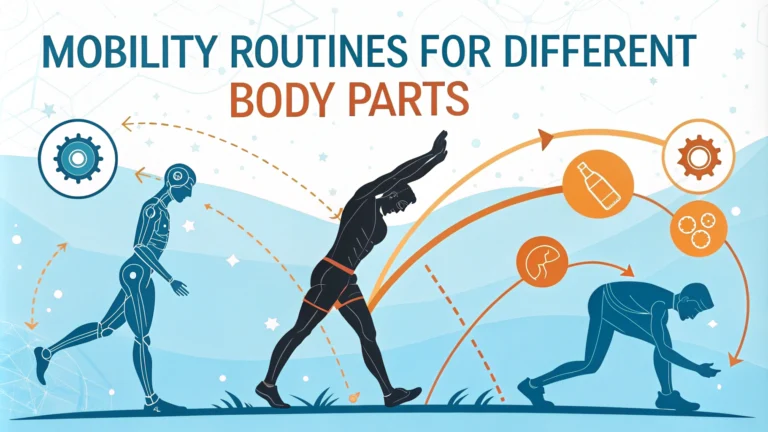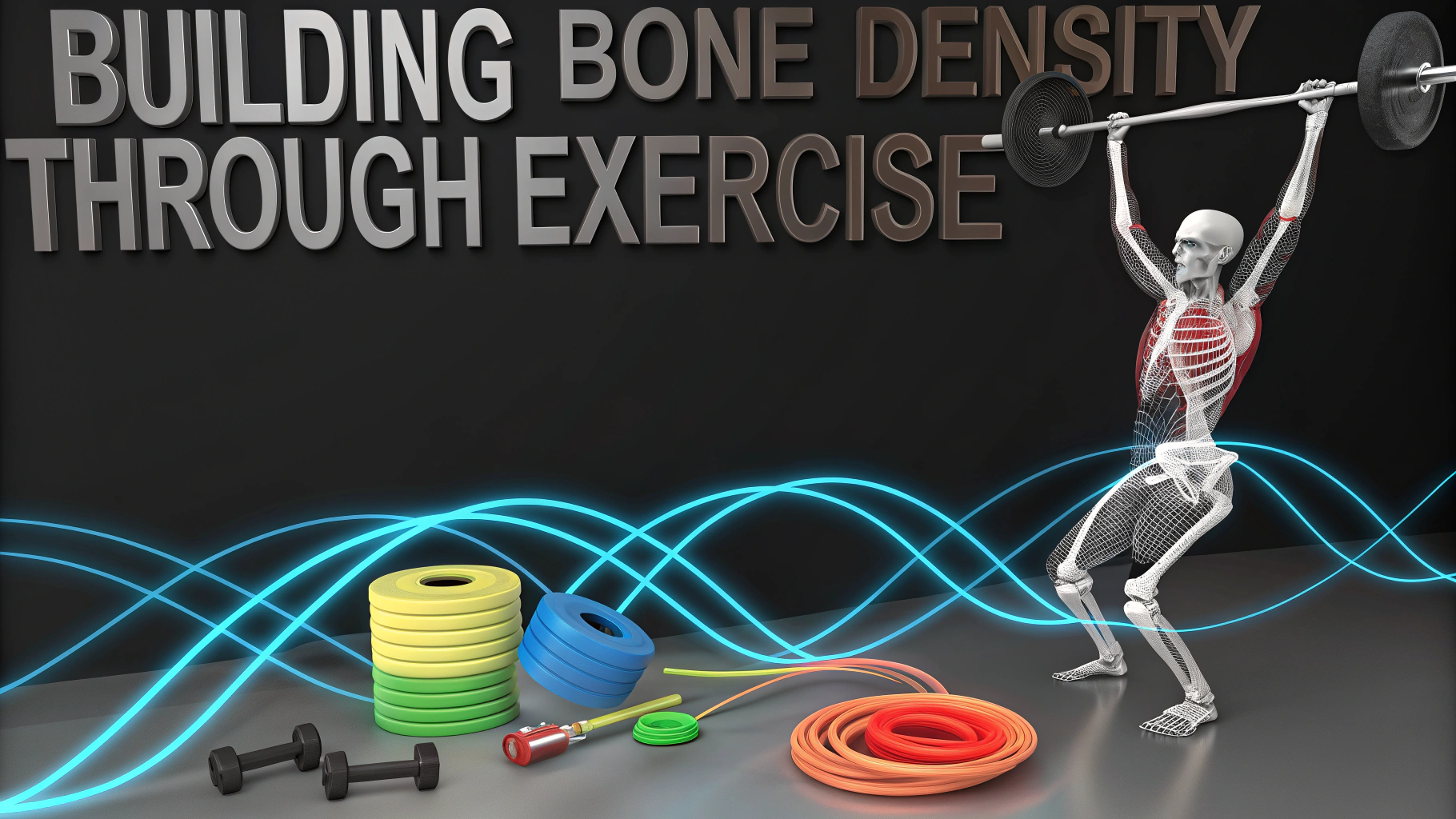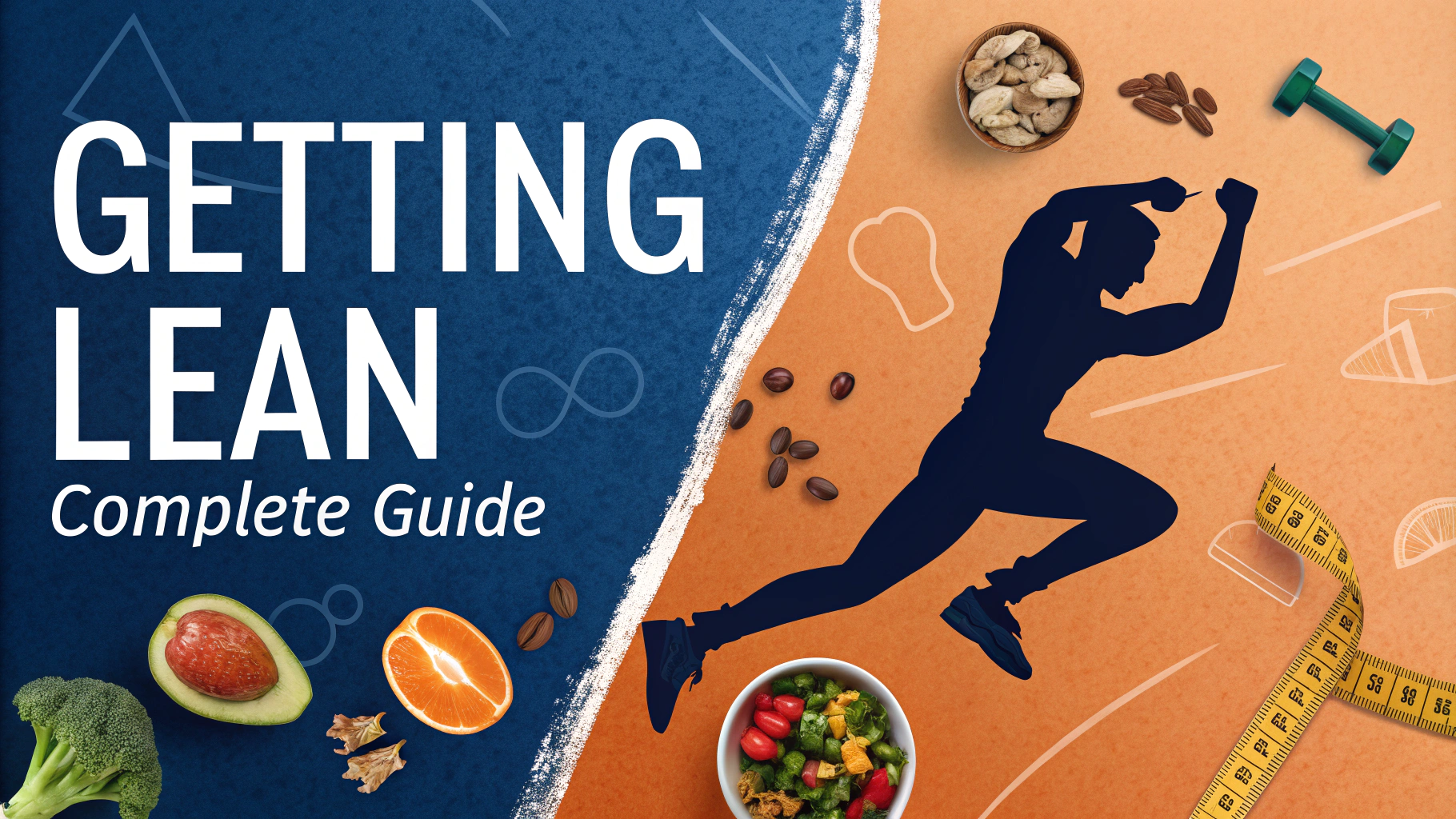A good mobility routine can prevent injuries, improve performance, and help you move better in daily life.
Upper Body Mobility
Start with neck rotations – slowly turn your head from side to side for 30 seconds.
- Shoulder Circles: Roll shoulders forward and backward 10 times each
- Arm Swings: Swing arms forward and back 10 times
- Thoracic Extensions: Seated on a chair, reach back and arch spine
- Wrist Circles: Rotate wrists in both directions for 30 seconds
Lower Body Mobility
The lower body needs special attention as it bears most of our daily movement load.
- Hip Circles: Standing, rotate hips in circles 10 times each direction
- Ankle Rotations: Seated, rotate each ankle 10 times
- Deep Squat Hold: Hold for 30 seconds
- Leg Swings: Forward/back and side-to-side, 10 each leg
Core Mobility
Core mobility helps connect upper and lower body movements smoothly.
- Cat-Cow Stretch: 10 slow repetitions
- Thread the Needle: 5 times each side
- Bird Dog: Hold for 10 seconds each side
Sample Daily Routine
| Time of Day | Focus Area | Duration |
|---|---|---|
| Morning | Full Body Quick Mobility | 5-10 minutes |
| Before Workout | Target Area Mobility | 10-15 minutes |
| Evening | Recovery Mobility | 5-10 minutes |
Tools for Mobility Work
- Foam Roller: For myofascial release
- Resistance Bands: For assisted stretching
- Yoga Mat: For comfortable floor work
- Massage Ball: For targeting specific areas
Remember to breathe deeply during all mobility exercises and never force movements beyond comfort.
For personalized mobility routines, consult a certified physical therapist or mobility coach in your area.
Track your progress using a simple mobility journal or smartphone app like ROMWOD or MobilityWOD.
Additional Resources
- American Council on Exercise (ACE): www.acefitness.org
- National Academy of Sports Medicine: www.nasm.org
Recovery Protocols
Proper recovery between mobility sessions ensures maximum benefits and prevents overtraining.
- Sleep Position: Use supportive pillows to maintain neutral spine
- Hydration: Drink water throughout the day to keep joints lubricated
- Active Recovery: Light walking or swimming on rest days
- Contrast Therapy: Alternating hot and cold treatments for inflammation
Common Mobility Mistakes
What to Avoid
- Bouncing: Use controlled movements instead of ballistic stretching
- Rushing: Take time to feel and control each movement
- Ignoring Pain: Distinguish between discomfort and actual pain
- Inconsistency: Regular practice yields better results
Progress Tracking
Monitor these key indicators to measure mobility improvements:
- Range of Motion: Take monthly measurements
- Movement Quality: Film exercises for form check
- Pain Levels: Note any changes in chronic issues
- Performance Metrics: Record workout improvements
Conclusion
Integrating mobility work into daily routines creates lasting improvements in movement quality and overall health. Start gradually, maintain consistency, and adjust exercises based on individual needs and progress. Regular mobility practice, combined with proper recovery and tracking, leads to better movement patterns and reduced risk of injury.
Remember that mobility is a journey, not a destination. Stay patient and committed to your mobility practice for long-term success.
FAQs
- What exactly is mobility training and how does it differ from flexibility?
Mobility refers to the active range of motion in your joints and surrounding muscles, while flexibility is passive stretching. Mobility involves control throughout the movement pattern and combines strength with range of motion. - How often should I perform mobility exercises for optimal results?
Perform mobility exercises 3-5 times per week, with daily practice being ideal. Short 10-15 minute sessions are effective when done consistently, particularly before workouts or after long periods of sitting. - Which body parts need the most mobility work in the modern lifestyle?
The hips, thoracic spine (upper back), shoulders, and ankles typically need the most mobility work due to prolonged sitting and computer use. These areas commonly develop restrictions that affect overall movement quality. - Can mobility work help reduce chronic pain?
Yes, mobility work can help reduce chronic pain by addressing joint restrictions, improving movement patterns, and reducing compensations that may cause pain. Regular mobility work helps maintain proper joint function and tissue health. - What are the best mobility exercises for hip health?
90/90 hip rotations, hip CARs (Controlled Articular Rotations), deep squat holds, and pigeon pose variations are highly effective for hip mobility. These exercises target different planes of hip movement. - How long should I hold mobility positions?
Dynamic mobility movements should be performed for 5-10 repetitions, while static holds should be maintained for 30-60 seconds. For joint CARs, perform movements slowly and controlled through full ranges. - What equipment is needed for effective mobility training?
Most mobility work requires minimal equipment. A yoga mat, foam roller, and lacrosse ball are basic tools. Resistance bands can be helpful but aren’t essential for beginning mobility work. - Should mobility work be done before or after strength training?
Dynamic mobility work is best performed before strength training as part of a warm-up. More intensive mobility work can be done after training or as separate sessions to avoid fatiguing muscles before lifting. - How can I tell if I have poor mobility in a particular joint?
Compare your movement to standard ranges of motion, check for pain or restriction during basic movements, and observe daily activities. Difficulty performing fundamental movements like squatting or reaching overhead indicates mobility limitations. - What role does breathing play in mobility work?
Proper breathing helps relax the nervous system and enables deeper ranges of motion. Diaphragmatic breathing during mobility work helps reduce tension and promotes better movement quality.








